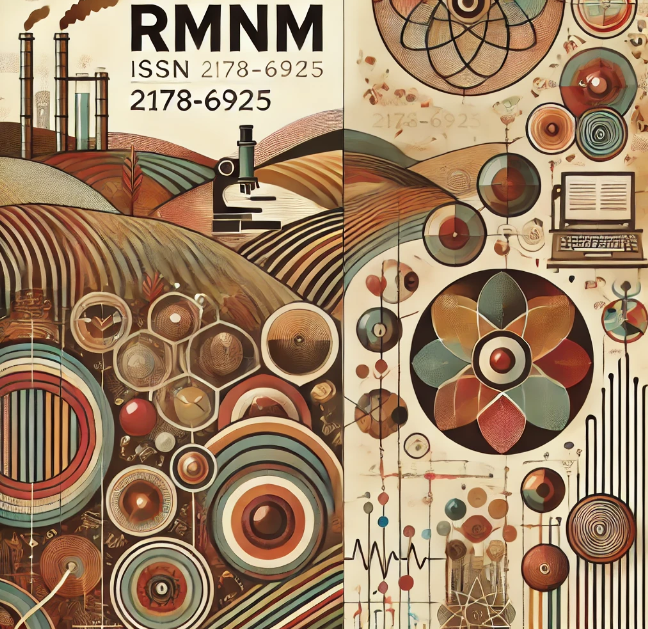THE DIFFICULTIES OF THE LIBRAS INTERPRETER A THEORETICAL AND HISTORICAL JOURNEY IN THE MUNICIPALITY OF PORTO VELHO-RO: A STUDY AT THE BILINGUAL MUNICIPAL SCHOOL
DOI:
https://doi.org/10.61164/rmnm.v9i1.2851Keywords:
Education, History and Profession, Bilingualism, Deaf EducationAbstract
Historically, deaf people have been struggling for many years. Since the Ancient Age, they were considered by the Egyptian peoples to be people sent by the gods, privileged people, and they were also considered to be beings of innate life and did not have the right to education. In this article we seek to provide a social history of this individual, as would be their historical journey as a social subject. We have identified the first book on deaf education that described the manual alphabet, published by Juan Pablo Bonet in the mid-1620s, in the work “Reduccion delas letras y arte para ensiñar a hablar los mudos”. In this book, the author demonstrates the oral method that was used as a basis for teaching throughout Europe, as Veloso and Maia (2017) point out. The theoretical-methodological approach to this article was qualitative, based on bibliographical research by authors such as Lacerda (2012) and Strobel (2018), among others. The locus of the research was the Municipal Bilingual Children's School of Porto Velho-RO.
References
BRASIL. Lei nº 12.319. Diário Oficial [da] República Federativa do Brasil, Brasília, 1° de setembro de 2010.
____________,Lei nº 10.436, 24 de abril de 2002. Língua Brasileira de Sinais - LIBRAS, Brasília, 2002.
COELHO, L. A. B.; SCHUBER, S. E. M.; SILVA, R. Q. Surdos: o desafio da inclusão no ensino regular. Paraná: 2017.
DAMÁZIO, Milene Ferreira Macedo. Atendimento Educacional Especializado: Pessoa com Surdez. Brasília: MEC, 2007.
FERNANDES, E. Língua de sinais e desenvolvimento cognitivo de crianças surdas. Revista Espaço: informativo técnico-científico do INES, Rio de Janeiro, 2000.
LACERDA, Cristina Broglia Feitosa. O Intérprete de LIBRAS: em atuação na educação infantil e no ensino fundamental. Porto Alegre: Mediação/FAPESP, 2009.
LACERDA, C. B. F.; SANTOS, L. F. dos; CAETANO, J. F. Estratégias metodológicas para o ensino de alunos surdos. In: Coleção UAB – UFSCar. Língua de Sinais Brasileira: uma introdução. São Carlos: Departamento de Produção Gráfica da USFCar, 2011.
LACERDA, C. B. F. de & POLETTI, J.E. A escola inclusiva para surdos: A situação singular do intérprete de Língua de Sinais. In: Anais da 27 reunião anual da ANPED. Caxambu: ANPED, 2004.
MARCONI, Marina de Andrade; LAKATOS, Eva Maria. Fundamentos de Metodologia Científica. 8.ed. São Paulo: Atlas, 2019.
QUADROS, R.M. de. O tradutor e intérprete da língua brasileira de sinais e língua portuguesa. Secretaria de Educação Especial – Programa Nacional de Apoio à Educação de Surdos. Brasília: MEC/SEESP, 2004.
RODRIGUES, Cristiane Seimetz; VALENTE, Flavia. Intérprete de libras. Curitiba: IESDE Brasil S.A., 2012.
SKLIAR, C. A. Surdez: um olhar sobre as diferenças. 1. ed. Porto Alegre: Editora Mediação, 1998.
TESSER, Carla Regina Sparano. A interpretação para Libras em contexto educacional: Reflexão a partir da experiência na pós-graduação. Belas Infiéis, v. 8, n. 1, p. 105-118, 2019.
Downloads
Published
How to Cite
Issue
Section
License
Copyright (c) 2024 Revista Multidisciplinar do Nordeste Mineiro

This work is licensed under a Creative Commons Attribution-NonCommercial-ShareAlike 4.0 International License.




